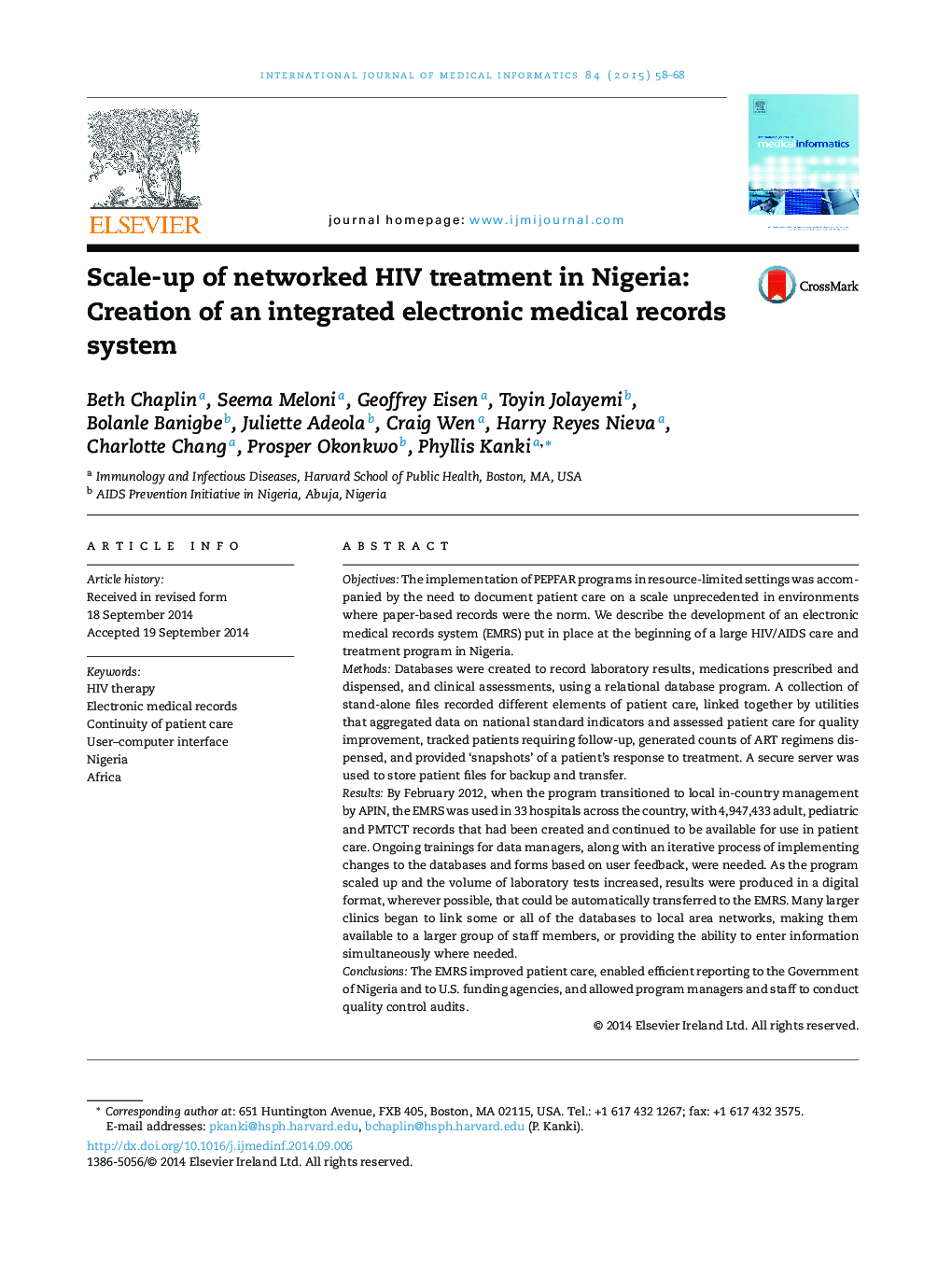| کد مقاله | کد نشریه | سال انتشار | مقاله انگلیسی | نسخه تمام متن |
|---|---|---|---|---|
| 516769 | 1449115 | 2015 | 11 صفحه PDF | دانلود رایگان |
• An EMRS needs to be adapted to local infrastructure constraints and culture.
• Sharing information with HIV-positive patients has an effect on adherence.
• Implementation of a sustainable EMRS is an iterative process.
• It's important to plan for outcome data and to expect ongoing revision of the EMRS.
ObjectivesThe implementation of PEPFAR programs in resource-limited settings was accompanied by the need to document patient care on a scale unprecedented in environments where paper-based records were the norm. We describe the development of an electronic medical records system (EMRS) put in place at the beginning of a large HIV/AIDS care and treatment program in Nigeria.MethodsDatabases were created to record laboratory results, medications prescribed and dispensed, and clinical assessments, using a relational database program. A collection of stand-alone files recorded different elements of patient care, linked together by utilities that aggregated data on national standard indicators and assessed patient care for quality improvement, tracked patients requiring follow-up, generated counts of ART regimens dispensed, and provided ‘snapshots’ of a patient's response to treatment. A secure server was used to store patient files for backup and transfer.ResultsBy February 2012, when the program transitioned to local in-country management by APIN, the EMRS was used in 33 hospitals across the country, with 4,947,433 adult, pediatric and PMTCT records that had been created and continued to be available for use in patient care. Ongoing trainings for data managers, along with an iterative process of implementing changes to the databases and forms based on user feedback, were needed. As the program scaled up and the volume of laboratory tests increased, results were produced in a digital format, wherever possible, that could be automatically transferred to the EMRS. Many larger clinics began to link some or all of the databases to local area networks, making them available to a larger group of staff members, or providing the ability to enter information simultaneously where needed.ConclusionsThe EMRS improved patient care, enabled efficient reporting to the Government of Nigeria and to U.S. funding agencies, and allowed program managers and staff to conduct quality control audits.
Journal: International Journal of Medical Informatics - Volume 84, Issue 1, January 2015, Pages 58–68
